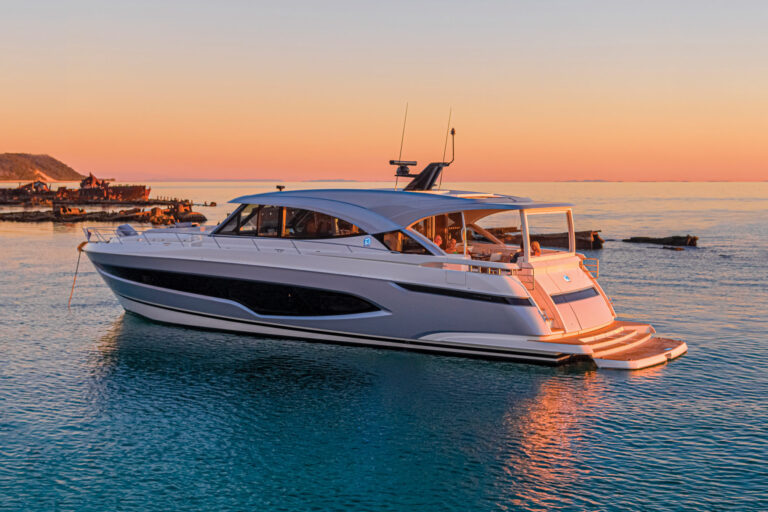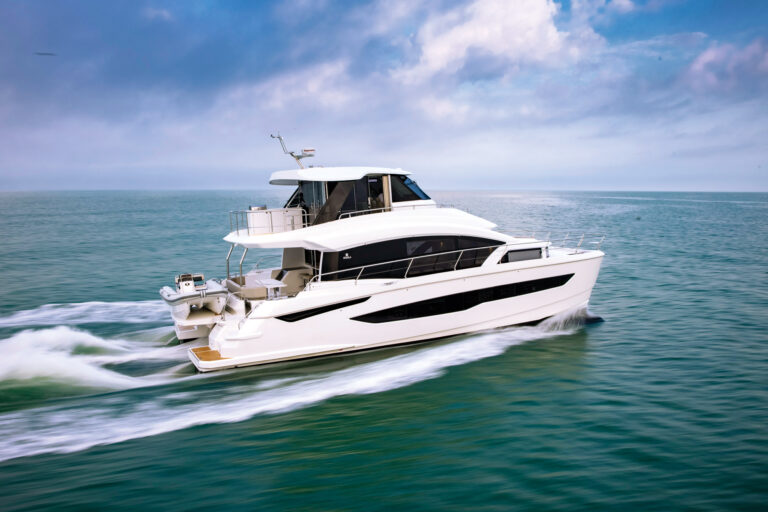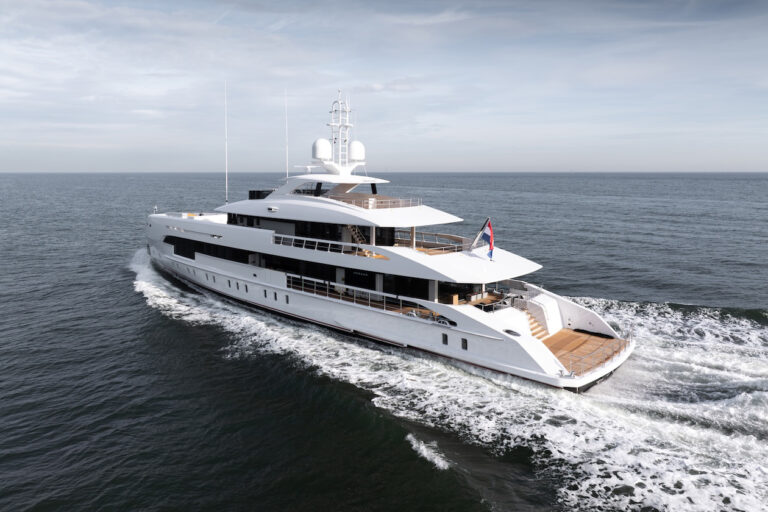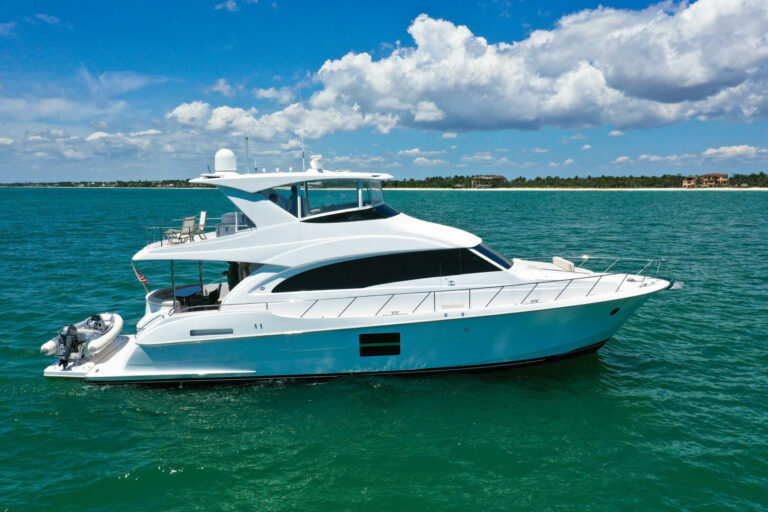If you watch old war movies or have ever been aboard a retired naval vessel, you can’t miss them: The ancestors of today’s multifunction electronic chart plotters. On these massive manual plotters, an analog dead-reckoning computer mechanically moved a pen across the chart’s surface. And that was your course.
Today’s most advanced chart plotters can provide a virtual view of the helmsman’s or navigator’s entire world. In addition to the vessel’s charted position, the screen can show information from the radar, AIS, sonar and wind sensors in numerous displays and cartographic choices. You can get photos, a variety of viewing perspectives and ancillary databases for tides, currents and the Coast Pilot.
Displays range from something the size of a BlackBerry to the 20-inch and larger screens that are common on the bridge of large yachts. A basic chart plotter can cost as little as $200 for a no-frills model or more than $20,000 when fully expanded and integrated with radar and sonar sensors.
When shopping for the “best chart plotter, the screen’s the thing. Regardless of screen size, the image must be clear and easy to see in the most challenging conditions-even when you are wearing polarized sunglasses.
The screen’s backlight must be dimmable if the unit is to be useful at night. Selection and control of the display should have an instant one-keystroke back-out option to restore the basic vessel position display.
The chart plotters described here comprise computational hardware, software, display screens and in many cases integral GPS sensors. General purpose computers running custom chart plotter software are also widely used.
Eagle: If fish is what you are after, consider an Eagle Electronics plotter. The company known for its sonar products has introduced a number of combination chart plotter/fish finders. The Intellimap 480 has a monochrome screen with cartography that includes Navionics plus MapCreate and HotMaps options. The Intellimap 500c uses a color TFT screen and has an extensive built-in chart database. Two combined chart plotter/single-frequency sonar units are available, the FishElite 480 and the FishElite 500c. Dual-frequency sonar/chart plotters include the monochrome 480 DF and the 500C DF plus the 6-inch screen 1000C DF and 7-inch screen 2000C DF. www.lowrance.com
Furuno: Color screens are standard on most Furuno chart plotters. The variation between models in the GP1650W through GP7000F/NT range lies in the type of cartography used (Furuno CDC/Navionics or C-MapNT) and the presence or absence of a fishfinder. The newest plotters are the NavNet 2vx, which uses integral 7- to 10.4-inch color LCD screens, and the Black Box NavNet 2vx products, which use separate 12- or 15-inch displays, plus the option of using standard screens of any size. The NavNet 2vx units can display (in addition to chart, radar, GPS and sonar data) video from a variety of sources, plus Furuno’s unique automatic weatherfax system. The NavNet 2vx is compatible with MaxSea Marine Software, making it possible to integrate the primary chart-plotter functions with an external computer-driven display. www.furunousa.com
Garmin: Garmin has everything from tiny handheld plotters to sophisticated networked ones, such as the GPSMAP 3006C and 3010C chart plotters that interface with radar, sonar and satellite weather. Both units use 6.4-inch diagonal sunlight readable VGA LCD screens. A third unit, the 3005C uses a 5-inch diagonal screen and has a built-in worldwide marine basemap. At the other end of the spectrum, Garmin continues to be a pioneer in the handheld market with six GPSMAP units. www.garmin.com/marine
Interphase: Interphase’s 11 series plotters are available with either daylight-viewable or full sunlight-readable VGA resolution LCD screens and can be used with closed-circuit video cameras. The Chartmaster V6 units have internal or external GPS antennas, use vertically oriented color LCDs and can accept data from a companion black-box fishfinder module. The 169CS chart plotter features a 16:9 aspect ratio, sunlight-readable color LCD display and a quick-disconnect mount so you can store it away. www.interphase-tech.com/chartplotters.html
Lowrance: Lowrance has a long history in the sonar field and all of its chart plotters come equipped with fishfinder technology. In fact, a series of units identified as S/MAP devices are specially adapted for hydrographic mapping using built-in Lowrance charts of the Great Lakes and U.S. coastal waters. In the LCX series, the LCX-26C HD and the LCX-111C HD have internal, shock-mounted 20 GB hard drives preloaded with an extensive chart library. www.lowrance.com/marine
Maptech: For $12,000 you can get a chart plotter that will display just about everything from radar to e-mail and do so on a touch-sensitive screen. The Maptech i3’s display screen is unique in its use of touch commands, backed up with a mouse-like control for rough conditions. Data from radar and sonar can be displayed and information from the marine Weather Channel is an option. When interfaced with a SkyMate VHF satellite communicator, the system can even handle e-mail. The Maptech chart database provides NOAA raster scan charts plus aerial views of harbors, 3-D bathymetric charts and coastal topographic maps. www.maptech.com
Navman: With the addition of the optional fuel-flow transducer, Navman chart plotters can provide the information you need to optimize engine power settings. The Tracker 5380 can be integrated with the Mercury Smart Craft data system to display propulsion system information. Two models have four-level grayscale screens, the others come with daylight viewable color LCDs. C-Map NT+ cartography is used, making the units compatible with the optional C-Map PC Planner software. www.navman.com/marine/products/navigation
Northstar: Northstar 6000i chart plotters have seven screen displays for chart, position, highway, radar, sonar, video and split-screen using Navionics cartography. The latest addition, the 15-inch screen 972, comes preloaded with Passport OnBoard Nobeltec charts for the entire world that you can access and download with a phone call. The chart database includes both raster and vector charts plus satellite images. Sonar display includes 3-D bathymetrics and the screen splits to view two to four images. www.northstarmc.com
Raymarine: Raymarine’s chart plotters extend from the 3.5-inch handheld RC400 (with a very sunlight-readable screen) to the newest H series, which integrates navigation, entertainment and security systems. The A series RC435 uses a 6-inch color screen with Navionics Gold cartography; C series units are multifunction, ultrabright sunlight-viewable navigation displays compatible with Raymarine’s radar and digital sounders. The E series uses Navionics Platinum charts and communicates with other navigation equipment over Raymarine’s SeaTalk high-speed data network. Chart plotter displays are also available as part of Raymarine’s H6 navigation/entertainment/security system. www.raymarine.com/raymarine
Simrad: Simrad has an optional transflective SunView screen for use with its 6-, 7-, 10- and 15-inch color LCD screens. The CP 31 and CX 33 units provide a 6-inch screen. The CX33 can display information in split-screen mode when used with the optional echo sounder. The CX series is available with 7-, 10- or 15-inch screens that can be divided to simultaneously display information from up to four sources, including sonar and radar sensors. www.simrad.com/main.asp
Si-Tex: If you have a very large yacht or commercial vessel, Si-Tex’s Trawl Plot 12 uses a 12-inch daylight viewable screen. Four chart cartridge slots are available in addition to a 3.5-inch floppy disk drive that can be used to enter data recorded from previous Si-Tex plotters. For recreational boats there’s the Neptune iGPS monochrome screen chart plotter, the Navmate, the ColorMax 6 with a horizontal 6-inch screen, the 7-inch screen ColorMax Wide and the 10.4-inch screen ColorMax 11. www.si-tex.com
Standard Horizon: An interesting feature of Standard Horizon’s three C-MAP MAX cartography chart plotters is that you can connect the plotters to a compatible Standard Horizon VHF/DSC radio and the position of other vessels communicating within DSC hailing will show up on the chart. The DSC feature will also create a call log of the other vessels’ MMSI and position. Vessels entered into the log can be called or silently polled to obtain their precise positions. The three units (with 5- to 10-inch color LCDs) all use the same high-speed processor and can be used with an optional FF250 fishfinder module. www.standardhorizon.com









